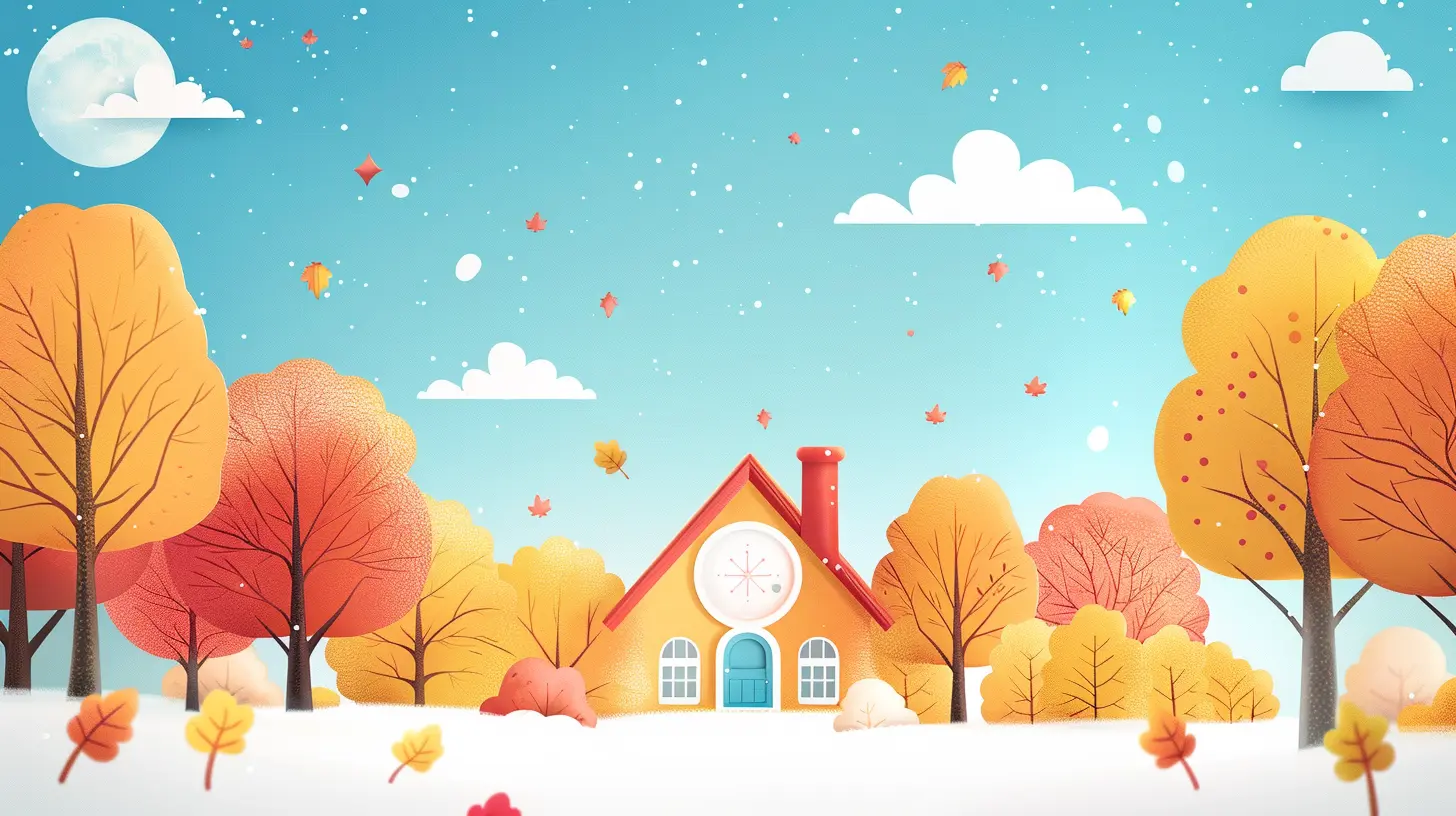Managing Baby Sleep During Seasonal Changes
8 July 2025
All parents know the drill—just when your baby finally starts sleeping through the night, something changes. Maybe it’s the sweltering heat of summer kicking in, or perhaps the days suddenly feel shorter with the arrival of fall. Seasonal changes can throw a major wrench into your baby’s sleep routine, and if you’re feeling exhausted trying to manage it all, trust me, you’re not alone.
In this guide, we’re going to tackle the ins and outs of managing baby sleep as the seasons shift. We’ll break down how temperature, light, allergies, and even time changes affect your little one’s rest. And more importantly—we’ll arm you with practical, mom-tested, dad-approved tips to keep sleep on track all year round.

Why Does Seasonal Change Disrupt Baby Sleep?
Let’s face it—babies are creatures of habit. They thrive on routines, familiarity, and predictability. Seasonal changes, however, introduce a ton of variables: longer or shorter daylight hours, shifts in temperature, daylight saving time, and even changes in outside noise levels (think summer barbecues or winter storms).These might seem like minor changes to us adults, but to a baby’s developing body and brain, they’re a big deal. Here’s how each season can mess with a baby’s sleep patterns.
Summer Sleep Struggles
1. The Heat Factor
Summer heat can turn bedtime into a sweaty, restless ordeal. Babies aren’t great at regulating their body temperature, so if the room gets too hot, they can become cranky and fussy, and in some cases, even overheat.What You Can Do:
- Keep the nursery between 68-72°F (20-22°C).
- Use breathable cotton sleepwear and light sleep sacks.
- Invest in blackout curtains to block out early morning sunlight.
- Use a quiet fan or air conditioner safely positioned away from the crib for airflow.
2. Extra Daylight
Longer days mean the sun sets later and rises earlier. Unfortunately, babies don’t understand that late sunsets don’t mean playtime.Helpful Fixes:
- Stick to a consistent bedtime even if it’s light outside.
- Use room-darkening shades or curtains.
- Start a calming bedtime routine a bit earlier to signal that sleep is coming.
Fall Challenges: Time Changes and Allergies
1. Daylight Saving Time Ends
When we "fall back" and gain an hour, it might sound like a gift. But for parents, it often means their baby wakes up at 5 a.m. instead of 6.Tips to Cope:
- Shift your baby's bedtime slowly—about 10-15 minutes later each night starting a few days before the time change.
- Keep light exposure during the day high to reset their internal clock.
- Use soft lighting in the evening to promote melatonin production.
2. Seasonal Allergies
Fall can also trigger allergies that mess with your baby’s breathing—and their sleep.Combat Allergies By:
- Keeping windows closed during high pollen times.
- Washing bedding frequently in hot water.
- Using an air purifier or a HEPA filter in the nursery.
- Talking to your pediatrician if symptoms persist or worsen.
Winter Woes: Dry Air and Short Days
1. Dry Air Woes
Winter air can be super dry, which means stuffy noses and sore throats—two things that don’t mix well with a good night’s sleep.Solutions:
- Use a cool-mist humidifier in the nursery.
- Keep your baby hydrated if they’re old enough to drink water.
- Dab a little baby-safe moisturizer on their nose if it’s getting chapped.
2. Dark Days and Cabin Fever
With less sunlight during winter, both you and your baby might start to feel a little cooped up, which can affect mood and sleep.Defending Against the Winter Funk:
- Even in colder months, bundle up and go for daily walks.
- Create a consistent indoor light schedule—bright during the day and dim in the evening.
- Engage in more stimulating playtime during the day to burn energy.
Spring Surprises: Changing Light and Allergens
Spring sounds like the season of renewal—but for baby sleep, it can be a bit chaotic.1. Daylight Saving Time Returns
This time you lose an hour—and it can take your baby days or even weeks to adjust.Your Action Plan:
- Start gradually moving naps and bedtime earlier by 10 minutes per day the week before the change.
- Get outside in the morning to soak up sunlight and help regulate their sleep/wake cycle.
- Keep the bedtime routine consistent, even if things feel off at first.
2. Springtime Allergies
Pollen, dust, and all the blooms can wreak havoc on little lungs.Preventative Measures:
- Frequent nasal rinses with saline spray (baby-safe, of course).
- Keep indoor air quality clean and fresh.
- Bathe your baby after outdoor playtime to remove pollen traces.
Year-Round Baby Sleep Tips (No Matter the Season)
Let’s not forget—consistency is key. No matter the season, here are a few foundational tips every parent should practice:1. Stick to a Sleep Schedule
Even if the sun rises at 5 a.m. or sets at 9 p.m., try to keep naps and bedtime around the same time each day. Babies thrive on rhythm.2. Create a Strong Bedtime Routine
Bath. Book. Cuddle. Sleep. Simple routines cue your baby’s brain that it’s time to wind down. Stick with it, year-round.3. Dim the Lights
Light plays a huge role in regulating circadian rhythms. Keep things dark during sleep and bright during wake time—even when it’s gloomy outside.4. Be Mindful of Clothing
Always dress your baby for the temperature in the room, not outside. A good rule? One more layer than you’d wear yourself.5. Use White Noise
Seasonal noises (summer fireworks, fall storms, winter winds) can wake up sensitive sleepers. A white noise machine or app can help mask disruptive sounds.When to Call the Pediatrician
While it’s completely normal for babies to have occasional sleep hiccups, ongoing issues may signal something more serious.You should reach out to your pediatrician if:
- Your baby’s sleep disruptions last more than two weeks after a seasonal adjustment.
- They’re showing signs of illness or respiratory distress.
- Sleep regressions happen frequently without cause.
Your doctor can rule out health concerns like sleep apnea, allergies, or developmental challenges.
Personal Story: From Sleepless to Snoozing
Let me tell you a quick story—last summer, I was convinced that my 10-month-old was allergic to sleep. She’d been napping like a champ all spring, but as soon as June hit, it was like trying to put a squirrel to bed.Turns out, the room was way too warm and bright. After investing in blackout curtains and a small oscillating fan, things turned around fast. Within days, she was sleeping longer and waking up happier.
The moral? Sometimes a simple tweak makes all the difference.
Wrapping It All Up
Managing baby sleep during seasonal changes isn’t about perfection—it’s about preparation. Think about what each season brings, whether it's heat, light, dryness, or allergies, and plan ahead with little adjustments. Keep your routine steady, troubleshoot issues calmly, and don’t hesitate to reach out to your pediatrician when needed.Let’s be real—no one can control the weather. But with these tips and a bit of patience, you can ride the seasonal waves without losing (too much) sleep.
Just remember: this too shall pass. Babies change. Seasons change. But with a solid sleep foundation, you’ve got this.
all images in this post were generated using AI tools
Category:
Baby SleepAuthor:

Maya Underwood
Discussion
rate this article
2 comments
Sylas Klein
Great insights! Seasonal changes can be tough on little ones' sleep patterns. Your tips on creating a calming routine and adapting the environment are incredibly helpful for tired parents. Thank you!
November 27, 2025 at 4:16 PM
Zinn McKay
Navigating seasonal changes with a baby can be challenging, and it's completely normal to feel overwhelmed. Remember, each season brings unique adjustments for both you and your little one. Be gentle with yourself, and trust that these shifts are temporary. You're doing an amazing job, and your love shines through every struggle.
July 14, 2025 at 3:16 AM

Maya Underwood
Thank you for your supportive words! Acknowledging these challenges is important, and your encouragement reinforces the idea that we're all figuring it out together.


